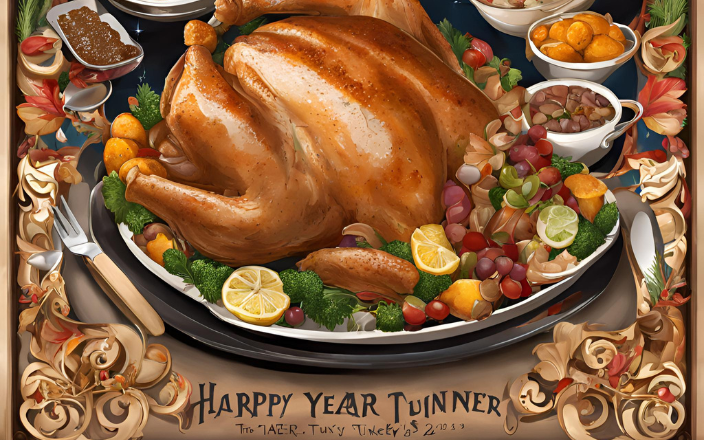In the United States, turkey is a popular dish not only during Thanksgiving but also during New Year’s celebrations. While Thanksgiving is the holiday most associated with turkey, many American families also enjoy this delicious bird as part of their New Year’s Eve or New Year’s Day feasts.
A tradition beyond Thanksgiving
Turkey has long been a staple of American holiday meals. Its popularity during Thanksgiving is well-documented, with millions of turkeys consumed each year. However, the tradition of eating turkey extends beyond Thanksgiving. During New Year’s celebrations, turkey often takes center stage on the dinner table, symbolizing abundance and prosperity for the coming year.
Regional variations
The way turkey is prepared and served can vary significantly across different regions of the United States. In the South, for example, deep-fried turkey is a popular choice, offering a crispy and flavorful alternative to the traditional roasted turkey. In the Northeast, turkey might be served with a variety of sides such as cranberry sauce, stuffing, and mashed potatoes, similar to a Thanksgiving meal.
Health benefits
Turkey is not only a festive choice but also a healthy one. It is a lean source of protein, rich in vitamins and minerals such as B vitamins, zinc, and selenium. These nutrients are essential for maintaining good health, especially during the winter months when the immune system can benefit from a nutritional boost.
Modern twists
In recent years, there has been a trend towards more creative and diverse ways of preparing turkey for New Year’s celebrations. Some families opt for smoked turkey, which adds a unique flavor profile to the meal. Others might experiment with international recipes, incorporating spices and cooking techniques from different cultures to create a fusion dish that reflects the diverse culinary landscape of the United States.
Sustainability and ethical considerations
As awareness of sustainability and ethical food sourcing grows, more Americans are choosing to purchase turkeys from local farms that practice humane and environmentally friendly farming methods. This shift not only supports local economies but also ensures that the turkeys are raised in better conditions, aligning with the values of many consumers who are increasingly concerned about the origins of their food.
Conclusion
Turkey consumption during New Year’s celebrations in the USA is a testament to the bird’s versatility and enduring popularity. Whether roasted, fried, smoked, or prepared with a modern twist, turkey remains a beloved part of American holiday traditions. As families gather to welcome the new year, the presence of turkey on the table symbolizes not only a delicious meal but also the hope and prosperity that the new year brings.
Sources: Available upon request.

